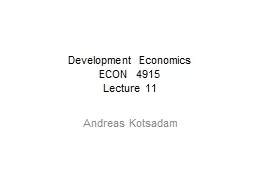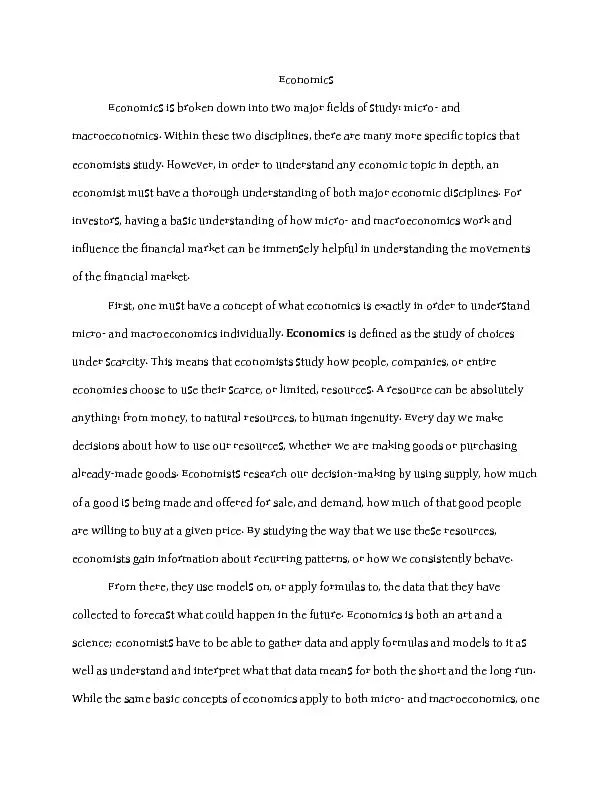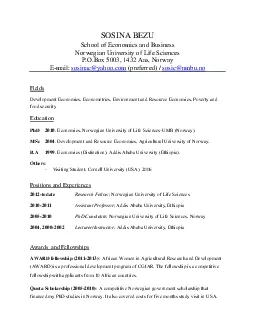PPT-Development Economics
Author : celsa-spraggs | Published Date : 2015-12-08
ECON 4915 Lecture 11 Andreas Kotsadam Outline Question from you Possible exam question and a recap Last years exam is posted on the web Outline continued Big question
Presentation Embed Code
Download Presentation
Download Presentation The PPT/PDF document "Development Economics" is the property of its rightful owner. Permission is granted to download and print the materials on this website for personal, non-commercial use only, and to display it on your personal computer provided you do not modify the materials and that you retain all copyright notices contained in the materials. By downloading content from our website, you accept the terms of this agreement.
Development Economics: Transcript
Download Rules Of Document
"Development Economics"The content belongs to its owner. You may download and print it for personal use, without modification, and keep all copyright notices. By downloading, you agree to these terms.
Related Documents














